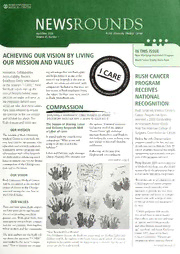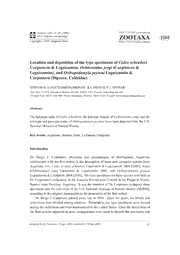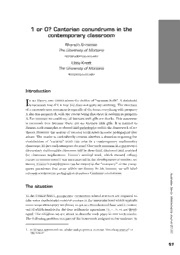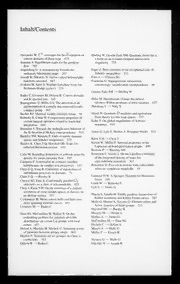
Stop the Clocks!: Time and Narrative in Cinema PDF
Preview Stop the Clocks!: Time and Narrative in Cinema
Helen Powell is a Senior Lecturer in the School of Arts and Digital Industries at the University of East London. She has also worked in the advertising industry and adopts an interdisciplinary approach in her teaching, writing and research. PPrreelliimmss__2277jjaann..iinndddd ii 11//2277//22001122 88::1100::5555 PPMM PPrreelliimmss__2277jjaann..iinndddd iiii 11//2277//22001122 88::1100::5566 PPMM Stop the Clocks! TIME AND NARRATIVE IN CINEMA HELEN POWELL PPrreelliimmss__2277jjaann..iinndddd iiiiii 11//2277//22001122 88::1100::5566 PPMM Published in 2012 by I.B.Tauris & Co Ltd 6 Salem Road, London W2 4BU 175 Fifth Avenue, New York NY 10010 www.ibtauris.com Distributed in the United States and Canada Exclusively by Palgrave Macmillan 175 Fifth Avenue, New York NY 10010 Copyright © 2012 Helen Powell The right of Helen Powell to be identifi ed as the author of this work has been asserted by her in accordance with the Copyright, Designs and Patent Act 1988. All rights reserved. Except for brief quotations in a review, this book, or any part thereof, may not be reproduced, stored in or introduced into a retrieval system, or transmitted, in any form or by any means, electronic, mechanical, photocopying, recording or otherwise, without the prior written permission of the publisher. International Library of the Moving Image: 4 ISBN 978 1 84885 175 7 (PB) 978 1 78076 216 6 (HB) A full CIP record for this book is available from the British Library A full CIP record is available from the Library of Congress Library of Congress Catalog Card Number: available Printed and bound in Great Britain by TJ International Ltd, Padstow, Cornwall PPrreelliimmss__2277jjaann..iinndddd iivv 11//2277//22001122 88::1100::5566 PPMM This book is in memory of my wonderful Mum, Barbara Elizabeth Powell. PPrreelliimmss__2277jjaann..iinndddd vv 11//2277//22001122 88::1100::5566 PPMM PPrreelliimmss__2277jjaann..iinndddd vvii 11//2277//22001122 88::1100::5566 PPMM CONTENTS List of Illustrations viii Introduction Cinema as Time Machine 1 Chapter 1 Real Time 11 Chapter 2 Future Time 33 Chapter 3 Dreaming Time 61 Chapter 4 Consuming Time 87 Chapter 5 Fractured Time 115 Conclusion Time in the Digital Age 143 Bibliography 165 Index 179 PPrreelliimmss__2277jjaann..iinndddd vviiii 11//2277//22001122 88::1100::5566 PPMM LIST OF ILLUSTRATIONS Figure 1 Rope – Universal Pictures 23 Figure 2 Phone Booth – Fox 2000 29 Figure 3 Voyage dans la lune – Méliès Foundation 34 Figure 4 La Jetée – Argos fi lms 53 Figure 5 Un Chien andalou – RGA 72 Figure 6 Lost Highway – October Films 80 Figure 7 Wings of Desire – Road Movies Film 93 Figure 8 Interview with the Vampire – Geffen Pictures 102 Figure 9 A Matter of Life and Death – ITV Global Entertainment 107 Figure 10 The Usual Suspects – Polygram 132 Figure 11 Pulp Fiction – Miramax 139 Figure 12 Timecode – Screen Gems 160 Images from the Ronald Grant Archive (www.ronaldgrantarchive.com) PPrreelliimmss__2277jjaann..iinndddd vviiiiii 11//2277//22001122 88::1100::5566 PPMM INTRODUCTION: CINEMA AS TIME MACHINE ‘What, then, is time?’ asks Augustine. ‘I know well enough what it is, provided that nobody asks me; but if I am asked what it is and try to explain, I am baffl ed.’ (The Confessions, Book XI, cited in Ricoeur, 1984: xi) How might we begin to articulate what it is like to experience time? This is the challenge that Augustine faced (a.d. 354–430) and which continues to provoke thought across a range of disciplines into the twenty-fi rst century. There are multiple points of access to this debate but I should like to consider a television advertisement as an interesting starting point. I have been drawn to the rise of mobile phone culture and its inter-relationship with all matters temporal: how we become visible, traceable at any moment when our phones are switched on but can disappear at the press of a button. How phones can alleviate concerns of being out of touch, of missing out. My students seem to have them perma- nently in their grasp and demonstrate the need to respond immediately when a call or text comes in for fear of severing some kind of invisible umbilical cord of communication. Yet it was the relationship between the mobile phone and its response to, or some might say generation of, time pressure that was most evident in the campaigns that followed their mass take-up. In 2007 Vodafone launched its ‘Raining Time’ campaign that centred on the rush hour, high- lighting the amount of time we spend waiting, queuing, staring at our watches or indeed at the clock on the phone, as for many the traditional wristwatch has now been made redundant by this mobile device. The skies darken and it begins to rain. As people run for cover they become aware that it is actually AAllll cchhaapptteerrss..iinndddd 11 11//2277//22001122 77::0055::2266 PPMM 2 STOP THE CLOCKS! clock parts that are falling from the sky and the voice-over begins. Dame Judi Dench announces: You might say it’s like striking oil in your garden or fi nding gold in the loft. Except this commodity can’t be bought or sold and we’ve all just become rich in it. From now on we all have more time. Because with Vodafone the internet is truly mobile. So you can make use of every minute of every day. This mobile phone company is giving us something we can’t buy: time. Fast forward then to 2010 and the introduction of the Sony Ericsson XPERIA 10, a mobile phone which promises to save us even more time. Its print campaign addresses us: ‘Don’t let time escape. Get it back –’ where with ‘a quick fl ick of the fi nger and you’re scrolling back and forward through time.’ Studying adver- tising provides us with an insight into the socio-cultural concerns of any given moment. The last years of the twentieth century identifi ed a new temporal turn characterised by time scarcity, of individuals wishing they had more time to do what they wanted. However, this particular phase in our perception of and engagement with time and its subsequent media representation is just one perspective. This book taps into a multiplicity of other temporal trends that can be identifi ed since cinema began. From the outset of modernity, the clock has become inextricably linked to our conceptualisation and understanding of time. However, what the clock does not represent or communicate is its experiential dimension. For the time of consciousness, and indeed unconsciousness, contrasts starkly in shape and form with the rationalised world of mechanical measuring devices. And it is here that cinema, the subject of this book, begins to play a signifi cant role in this tempo- ral debate. Cinema needed to represent temporal fl ow visually and chose to do so boldly from the outset without the aid of a clock visible on screen to mark duration. Through the omission of this fundamental constraint many different ways to represent the passing of time in cinema followed and are subject here to documentation and discussion. Cinema became the primary modern means of storytelling: through varying degrees of a suspension of disbelief, audiences were willing and indeed thrilled to be transported to other times and indeed other worlds, as the genre of science fi ction, examined here, will testify in the extreme. Yet early cinema existed without narrative. The Lumières’ actualities captured life as it happened with all its contingencies. Only later did narrative come to dominate, and in one particular form, in the context of mainstream cinema. The classical Hollywood narrative embodies a specifi c representation AAllll cchhaapptteerrss..iinndddd 22 11//2277//22001122 77::0055::2266 PPMM
Description:The list of books you might like

As Good as Dead

$100m Offers

Shatter Me Complete Collection (Shatter Me; Destroy Me; Unravel Me; Fracture Me; Ignite Me)

The 48 Laws of Power

La venganza del Highlander

Alcatel OneTouch Pop 7 User guide
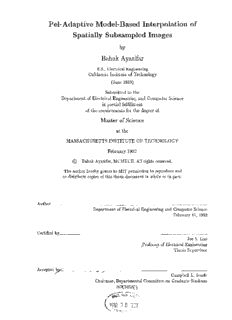
by

by Eshrag Ali Ahmad Refaee
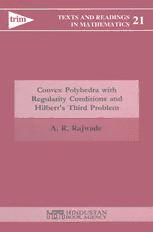
Convex Polyhedra with Regularity Conditions and Hilbert’s Third Problem
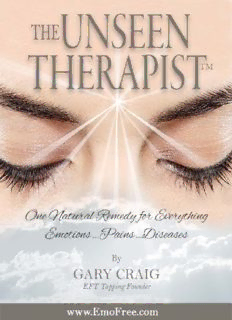
FREE E-Book The Unseen Therapist

An Introduction to Fully Integrated Mixed Methods Research

Infinite ergodic index of the ehrenfest wind-tree model

Актуальные проблемы частного и публичного права. Вып. 10. Конференция

История футбола СССР. Чемпионат СССР. Класс А 1950 год

by Alexandre Dumas adapted by Carol M. Rice
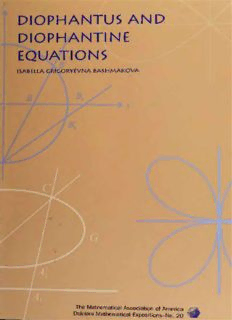
Diophantus and Diophantine Equations
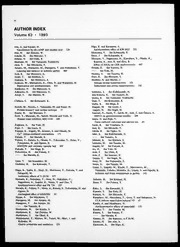
Japanese Journal of Pharmacology 1993: Vol 63 Index
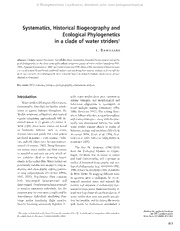
Systematics, Historical Biogeography and Ecological Phylogenetics in a clade of water striders

Interesting finds of Coleoptera from the SW Finnish Archipelago

CAMPSITE IMPACTS AND THE LIMITS OF ACCEPTABLE CHANGE PLANNING PROCESS: A ...
